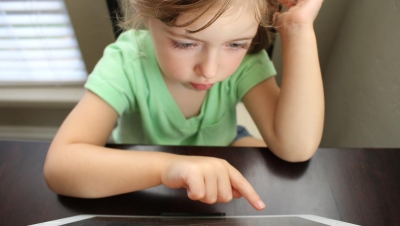Is TikTok Safe for Your Kids?
As a parent, it can feel impossible to keep up with the latest tech trends, games, and apps your child spends time on.
The latest social media craze is an app called TikTok, and while you’ve likely heard of it, you might be unsure of exactly what it is, how it works, and more importantly if it’s safe for your kids.
Here’s what parents should know about TikTok.
What is TikTok?
TikTok is a video-sharing social media platform where users can make and share short videos shot on their phones. There are endless types of different content to be found on the app, from lip-syncing over popular songs and silly dances to educational videos on topics like health or politics. Users can follow each other on the app to like, share, and comment on the videos they like.
Are there age limits on TikTok?
TikTok has a set of age requirements designed to keep younger users safe. Here’s the breakdown:
- Users under 13 are disabled from posting videos or adding comments.
- For kids ages 13 to 15, accounts are set to private by default, and only friends can comment on their videos.
- Only users aged 16 and older can live stream and use the direct messaging feature.
- Only users over 18 can buy, send or receive virtual gifts.
Although these guidelines are good in theory, and they do help to keep kids under the age of 13 from coming across inappropriate content, they can be easily bypassed simply by entering a fake birthdate upon registering for an account.
What are the risks?
When it comes to the internet and social media, we can never be 100% our kids won’t come across harmful content. All social media platforms come with some level of risk, and TikTok is no different. Here are some of the main risks for parents to be aware of.
- Exposure to inappropriate content: While TikTok’s guidelines prohibit illegal or inappropriate content to be shared within the app, there aren’t designated employees monitoring the process of weeding it out. Instead, the app uses an algorithm to automatically filter explicit content. While it gets the job done most of the time, there’s always a chance that some explicit content will slip through the cracks.
- Communication with strangers: There are over 1.1 billion people using TikTok. Given the interactive nature of the app, contact with strangers is bound to happen. This is particularly true for public accounts, which allows communication with anyone on the app.
- Cyberbullying: Parents already know that social media and cyberbullying go hand in hand. TikTok is bound to attract online strangers who spread hurtful comments, and there’s no guarantee your child won’t encounter them.
While the risks associated with TikTok shouldn’t be taken lightly, there are several ways parents can manage what their kids are exposed to on the app. TikTok offers multiple parental controls that can strengthen your child’s privacy and increase their protection while mitigating many of the risks discussed above.
While it’s important for parents to understand these risks, they aren’t any different from any other social media platform. One of the best ways to protect your children online is by making online safety discussions a priority, and taking the time to educate them on digital boundaries and why they matter. By helping kids see that certain precautions are in their best interest, they’ll be more equipped to navigate TikTok and other social media channels with more safety and awareness.











Add new comment